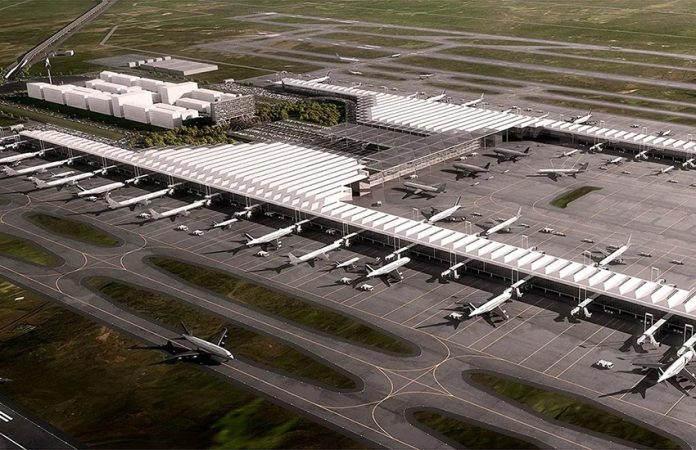The head of Airports Council International (ACI), the sole global trade representative of the world’s airports, has heaped praise on the construction of the new Mexico City airport, describing the progress made to date as “incredible.”
In an interview with the aviation news website A21, ACI director general Luis Felipe de Oliveira also said that the new airport could one day completely replace Mexico City’s existing airport, the AICM, due to its potential for expansion.
Both he and Rafael Echevarne, ACI’s Latin America chief, said that there are challenges to overcome before the airport can begin operations, such as ensuring that airspace is managed to operate concurrently with the existing Mexico City and Toluca airports and making it easily accessible for passengers.
However, after visiting the site of the Felipe Ángeles International Airport (AIFA), currently under construction at the Santa Lucía Air Force base, they were both impressed with the progress made by the Ministry of National Defense (Sedena) in building the facility, which is slated to open in March 2022.
“We’ve been big critics of the process because we never imagined that they were going to deliver what they’re doing,” de Oliveira said, apparently referring to the government’s decision to scrap its predecessor’s Mexico City airport project and start from scratch at a different site.
“We’ve seen business models in Latin America in which they promise a lot but deliver very little. But here, what they’ve done in two years is incredible. The construction is simple and modular but it flows and it’s well thought out. Sedena has learned a lot about airports in a very short time,” he said.
De Oliveira said that the AIFA won’t initially have the capacity to replace the AICM but could in the future because it clearly has the potential to expand.
“They’ve created an airport that is a kind of mirror, and it can be replicated on the other side [of the Air Force site], which would double the infrastructure” and create the kind of international hub airport Mexico needs, he said.
Initially at least, the AIFA is slated to operate in conjunction with the AICM and the Toluca airport as part of a three-pronged plan to meet rising demand — at least before the coronavirus pandemic — for airline services in the Valley of México metropolitan area.
Some aviation experts have questioned the viability of operating the AIFA and the AICM simultaneously due to their close proximity to each other. But Echevarne said the limited airspace issue can be overcome.
“We know that there are critics of the reconfiguration, but airspace shouldn’t be an obstacle. There are ways to organize all that; there is technology, and there are places in the world that are more complicated. With the will, it can be solved,” he said.
Echevarne and de Oliveira noted that the AIFA is quite far from Mexico City — about 50 kilometers north of the capital’s downtown — and therefore quick transportation connections will be essential. To that end, the federal government is building a new highway to the Santa Lucía airport and also plans to extend an existing suburban railway line to the site.
Source: A21 (sp)
